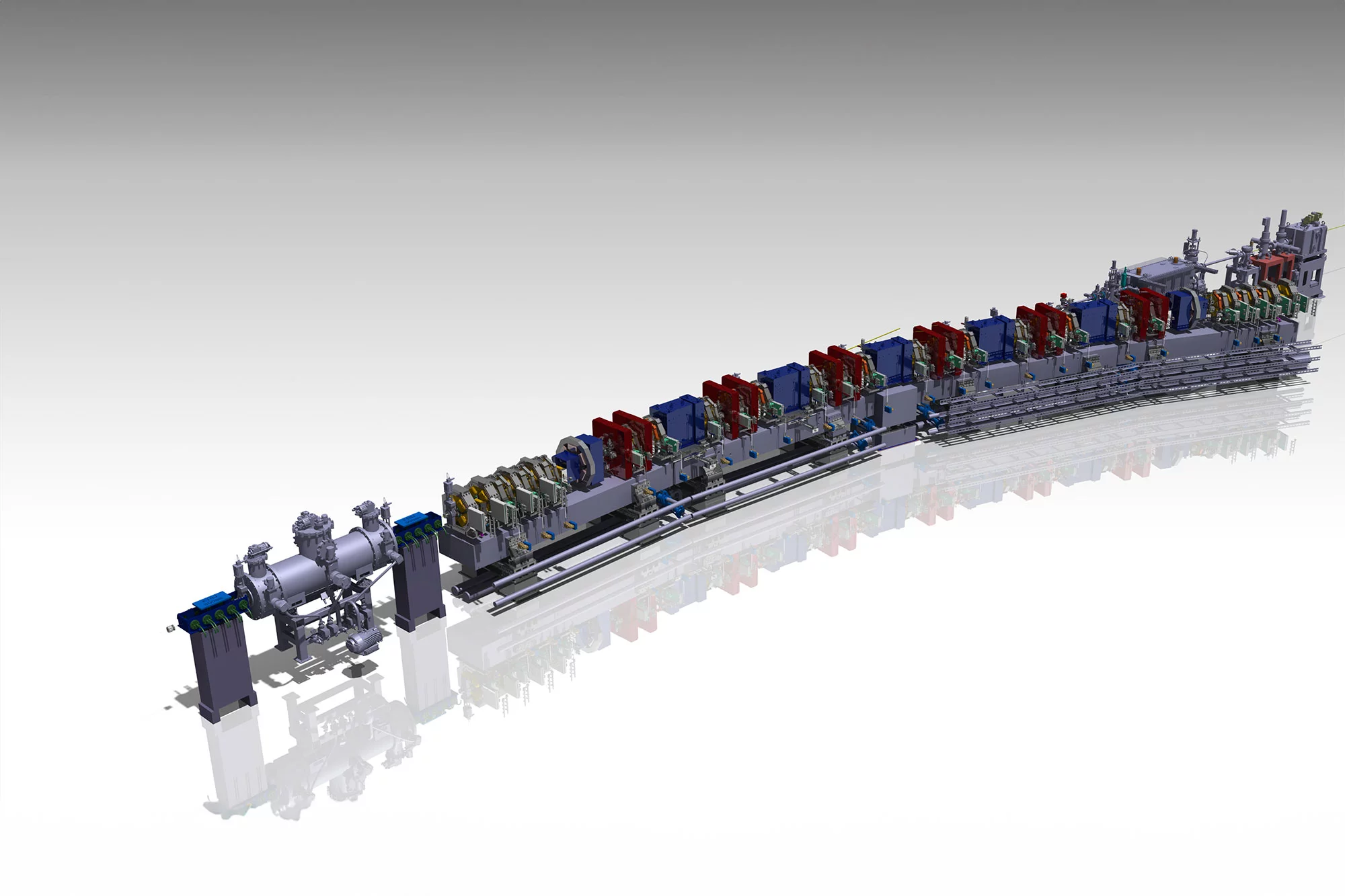
The Swiss Light Source (SLS) was in continuous operation for over two decades. During this time, it spearheaded groundbreaking research in biomedicine, engineering and the natural sciences, thanks in large part to the excellent performance of the underpinning electron accelerator and storage ring complex. In addition, it led the world in industrial exploitation, particularly in the pharmaceutical sector, and spawned numerous new companies, including one of the most successful Swiss technology spinoffs, Dectris. For much of this time, the SLS was a benchmark with regards to how closely its performance matched the theoretical limits defined by its machine parameters.
However, with the advent of the next generation of synchrotron light sources, called diffraction-limited storage-rings (DLSRs), which provide an improved emittance and brightness by up to two orders of magnitude, it became imperative to upgrade the SLS (called SLS 2.0). The upgrade of the machine, the insertion-device and bending-magnet sources, and the beamlines themselves, began in September of 2023 and promise an improvement in emittance of up to a factor of 40, and thanks in large part to novel undulator designs, an increase in brilliance by up to a factor of 1000 at some beamlines. Regular user operation for the first phase of beamlines is expected in mid 2026.
The SLS 2.0 upgrade comprises (a) a comprehensive rebuild of the storage ring and magnet lattice to a seven-bend achromat design, (b) novel insertion-device schemes, and (c) extensive upgrades of both x-ray optics and detectors at the beamlines. These substantial technological advances will mean Switzerland will continue to lead in the research most immediately and positively impacted by the enhanced brightness, such as ptychography (scanning lensless imaging), macromolecular crystallography, full-field tomography, soft x-ray ARPES, and resonant inelastic x-ray scattering.
Through these improvements, all of these fields are expected to undergo sea-changes in scope and quality, and yield data-rate increases of up to four orders of magnitude. In this manner, SLS 2.0 will maintain the competitive edge of PSI, the ETH Domain, and Switzerland for the next two decades in the most multidisciplinary and sought-after category of large-research facilities.
The beamline upgrades are taking place over two phases. The first of these began in parallel to the machine upgrade and pilot users are expected in the second half of 2025, followed by regular operation in 2026. After a brief second shutdown at the start of 2026 to install more insertion devices and superbends, the second phase of beamline commissioning begins in mid-2026, and most beamlines are expected to serve users by autumn of 2026.
Highlights
SLS 2.0: How to start up a particle accelerator
The electrons are back: after its upgrade, the Swiss Light Source SLS is starting up again, step by step.
Sample-position tracking using computer vision algorithms
In a collaboration between PSI and the Zurich University of Applied Sciences, a sample position tracking setup based on a computer vision algorithm was developed to automatically track the sample position. A factor of ten improvement on the overlap between consecutive x-ray absorption spectra was obtained when the automatic sample tracking was used.
Unlocking the secrets of proteins
This year’s Nobel Prize in Chemistry goes to three researchers who have made a decisive contribution to cracking the code of proteins – important building blocks of life. However, developing applications from this knowledge, for example in medicine, requires research institutes such as PSI.


